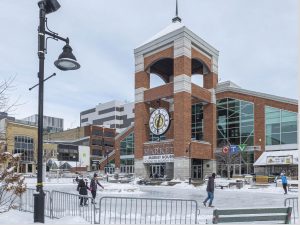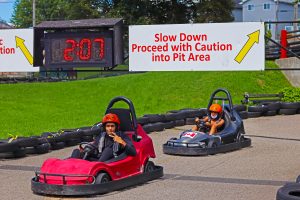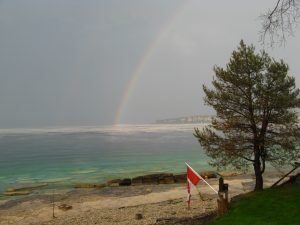Chapter 2: Trends in the Recreation and Leisure Industry
2.4 Emerging Trends
1. Increasing Use of Parks and Recreation Spaces for Positive Mental and Physical Health in Individuals and Communities
In a 2020 survey, 94% of Canadian cities reported increased awareness among elected officials of the value of parks to public health and crisis resiliency during COVID-19 (Stark et al, 2021). The pandemic of 2020 has only accelerated the realization of the importance that outdoor spaces play in the physical and mental health of humans. Parks and natural areas saw dramatic increases in usage, and most experts are predicting that this will continue beyond the end of the pandemic, as mental health is a predominant concern in today’s society. People have an enhanced appreciation for connecting with nature and being physically active outdoors.
Research has shown that the “greening” of urban settings has decreased feelings of depression in the population. One of the main conclusions from the Alberta Recreation Labour Report (2020) is the recognition of movement towards partnership and collaboration between recreation organizations and health organizations towards the betterment of the physical and mental wellbeing of community members.

2. Building an Inclusive Community
People in municipal recreation have always understood that part of their job is community-building. Recreation and leisure are great tools for bringing diverse people together in a common pursuit. Inclusiveness is now at the forefront of this community-building as recreation leaders focus on providing equitable access to facilities and opportunities. One example of this is municipal advisory committees that are formed to provide input from diverse members into planning of parks and recreational spaces. This growing public participation reflects the importance the public puts on recreation and recreational spaces, and recreation’s capacity to bring people together.

3. Technology
Advances in technology are influencing every aspect of our society, and its influence is only going to grow. It is now an expectation that technology will be available in even the most remote areas. Booking and scheduling software is improving the efficiency with which recreational organizations can manage people and capacity. Online payment methods increase convenience for the consumer while decreasing expenses for the organization. There is an expectation of Wi-Fi access, charging stations and digital information at facilities. We are seeing the emergence of augmented-reality walks, games and exhibits in public spaces such as museums, parks and libraries. Virtual reality spaces are becoming available that allow individuals to interact with others, whether while virtually travelling the world or attending a virtual concert. Esports are becoming more popular and need to be included in recreational spaces to create safe places for youth to gather and socialize.

4. Social Media
Mobile phones have opened the opportunity to take photos anywhere and share them on social media. Organizations are looking to optimize “photogenic” spots, encouraging people to take and share photos on their social media accounts. Parks are using QR codes to disseminate information at environmentally or historically significant spots in the park. It is starting to become understood that recreation and leisure activities are perfectly suited for social sharing, and this is a great way to market activities, facilities and community building.

Other trends
- An aging population: seniors are more active and demanding equal access to recreational opportunities and facilities
- Increased immigration
- Growing awareness of FNMI contributions, concerns and needs
- Climate change has increased environmental activism and the ‘Green’ movement
- Parks and green spaces are effective tools against extreme urban heat
- Movement toward informal & individual activities: as people have less time, they do what is convenient and less scheduled, this also leads to increasing participation in leisure activities
- Decrease in volunteerism: Many recreation and leisure organizations are dependent on volunteers to operate
- Increasing need for revenue generation: public funding is decreasing and forcing recreation and leisure industry organizations to find alternative revenue sources.
The one constant throughout the trends mentioned in this chapter is the need for continual innovation. The Recreation and Leisure industry needs to consistently create realistic, sustainable solutions for the societal challenges in personal and community wellbeing that lie ahead.
A good source for keeping up to date on trends can be found at Wunderman Thompson Insights website. Every year, they publish a Future Trends report for marketers. It is an in-depth look at the upcoming year and includes multiple markets found in the Recreation and Leisure Industry.

